- Home
- Charlaine Harris
The Sookie Stackhouse Companion Page 31
The Sookie Stackhouse Companion Read online
Page 31
What were your first impressions of the people in Bon Temps?
—NADEEN CUMMINGS
They felt really authentic to me. I grew up in a semismall town in the South (Marietta, Georgia), and the descriptions of the characters, the way they behaved and spoke, it all felt like something I recognized.
I love the character of Lafayette and am so glad that he survived Season 1 of True Blood, unlike his less-fortunate counterpart in the books. Did you decide that his character would go beyond Season 1 from the beginning, or was that decision made after seeing how well he came to life on screen?
—LAURA CHEQUER
The first scene I shot with Nelsan Ellis in the pilot made it abundantly clear to me that this was a character we could never lose. I am usually not a fan of actors who improvise, but Nelsan doesn’t just improvise, he channels from planet Lafayette. In a lesser actor’s hands, Lafayette could come across as extreme or one-dimensional; Nelsan makes him strong, fierce, and deeply lovable.
Will you consider casting yourself in a cameo role each season (à la Alfred Hitchcock)?
—TEDDI SMITH
Never! I allowed myself to be talked into doing that in an episode of Six Feet Under and have always regretted it. I think it would just take viewers out of the story.
Many changes have been made from Charlaine Harris’s books to the show, and I’m wondering why you chose to paint Bill and Sophie-Anne in the light you did, as opposed to the way Ms. Harris wrote the characters? While there are a lot of similarities in Bill, it seems your Sophie-Anne is very modern and not the regal, aristocratic French queen portrayed in the series. Any insight to your decisions would be appreciated.
—SUSAN MOSS
In True Blood, Sophie-Anne appears in the same season Godric appears. We chose not to have two ancient vampires who seem barely older than children in the same season. And ultimately, every nonregular character on our show exists to create conflicts and challenges for our regular characters. Having read all the books at this point, and knowing why Bill appeared in Bon Temps in the first place, we chose to play Sophie-Anne a little differently. We also were setting up a major story line in Season 3.
In the show, it consistently seems as if you are trying to villainize Eric and sanctify Bill, even referring to Eric as the “bad boy” more than once in interviews. This certainly does not stay true to the spirit of the books, as Eric is absolutely not a villain or even a bad boy in the books, and likewise Bill is definitely not a saint, nor is he even a “good guy” half the time. Is there a reason that you try to portray these characters in this manner, and if so, what is it?
—LISA ROWELL
Hmm . . . I am not sure I agree with your assessment. We have purposely shown many darker aspects of Bill, such as his penchant for sport-killing during his years with Lorena, his keeping things from Sookie, his interaction with the state patrolman he glamoured in Season 1, taking his gun and pointing it at him, and his murder of Uncle Bartlett. Likewise, we have shown many of the deeper, more tender aspects of Eric—his love for Godric, his grief at Godric’s true death. We continue with both of these directions inin Season 3. And it seems to me more dramatic to establish certain expectations about a character and then upend them than to just depict everyone as equal parts light and darkness. And when I use the term “bad boy,” I am referring to the kind of bad boy that women are consistently attracted to—a man who doesn’t play by the rules, a man who is a little dangerous, who is going to create more drama and fun than the good guy who does everything right.
Sex, death, food, and violence play a large role in True Blood. Americans have a possibly unhealthy relationship with all four, and yet we are fascinated by them. Is this the secret to the success of the books and series?
—SARA FOSTER
Honestly, I have no idea. I think the success of the series is because these stories and characters are so much fun.
It is not a common thing for the vampires in True Blood to be young and beautiful, as it normally is in other vampire television shows and movies. Why did you choose to go in this direction?
—ANNE FELDBAK
Well, I think while we have plenty of vampires who are young and beautiful, I like the idea that one can become a vampire at any point in his or her life. This is exactly as it is in Charlaine’s books—and I thought that was clever and unexpected. Also, I generally chafe at doing something the same way everyone else does it.
What plot point (so far) has been the most difficult to write, act, and film?
—MISTY PADGETT
Hmm—the storming of Merlotte’s by the black-eyed zombies . . . the final Maryann sacrifice/marriage . . . the storming of Steve Newlin’s church by the Dallas vampires.
What is your gauge to keep elements in the series that are in the books?
—KERI MCCOY
Instinct. And input by the other writers on staff.
Since art imitates life, explain what True Blood has to say about the American viewing public. What does our “bloodlust” say about the current cultural climate? The archetype has been used throughout history in many cultures, but what do you see this archetype revealing about us?
—JESSICA OHMAN
I leave that to the academics. Anything I say about why vampires are such potent symbols is just going to be me trying to pretend like I know why when I don’t. I’m just glad people are intrigued by vampires and other supernatural creatures because working on this show is the most fun I have ever had.
Did the real-life relationship of Anna Paquin and Stephen Moyer have an impact on the decision to diminish the role of Eric in favor of Bill in the True Blood series?
—LINDA J. KERLEY
I don’t really buy that the role of Eric has been diminished in favor of Bill. Eric has his own very strong story line in Seasons 2 and 3. Maybe you mean in terms of his relationship to Sookie . . . ? You have to remember we’re in the middle of True Blood. It is an ongoing story.
I noticed the episodes have different writers. How do multiple writers come to write something continuative? Is there a sit-down session for each episode that you drive? Do you say, “I would like so-and-so to write this particular scene”?
—CYNTHIA MEIER
I work with six other writers. We break stories and outline episodes as a group, then a single writer writes the script. We give notes as a group, then that same writer writes a second draft of the script. Sometimes I do a polish if I believe it is necessary. Writers generally volunteer for the episodes they want to write.
What is it about the show True Blood that represents you in some way?
—AARON HARRIS
I guess I would say the irreverence, the humor, the fascination with the bizarre, the romance, the fun.
What do you find to be most challenging when depicting a fictional world from book to screen (besides the fans wanting certain story lines)?
—EMILY MELONAS
Hmm . . . keeping everyone’s actions motivated and based in their emotional needs and desires. In the case of Charlaine’s books, keeping the characters who are not Sookie active in their own stories.
What inspired you to bring in characters on the show that were not in the books, such as Jessica and Daphne, as well as to keep Lafayette? (We are grateful for these characters, as they are awesome; just curious.)
—KIMBERLEE TUCKER
Again, it all comes down to creating stories for characters who are not Sookie, and in Lafayette’s case, loving what Nelsan Ellis was doing so much that I wanted to keep him in the show.
My question is regarding the character Bill Compton. I really liked the character in the books and hated to see him pushed to the side so often, so I must say I really enjoy him being a front-burner character in the show. What was it about the character on the page that made you connect with him? What were you looking for in the actors who auditioned for the part, and how did you feel when you finally found the talented and gorgeous Stephen Moyer to fill the role?
�
�BARBI BARRIER
Well, just like you, I loved the idea of a man who had basically lost everything ; who, because of his and Sookie’s circumstances (him being vampire, her being telepathic), is suddenly given a second chance at love and meaning in his life. When casting, I kept looking for a man who seemed like he was from another time, who knew how to play that undercurrent of sadness, and also was dashing and handsome, like a true romantic hero. When we found Stephen, I was thrilled, because we had been looking for a long time prior.
I really enjoy watching the show, but never watch the opening credits, as I find them unnerving. How and why did you come to decide on such a thought-provoking opening sequence?
—OLIVIA PAVEY
I wanted something primal, something that really communicated Southern gothic, something that alluded to the twin polarities of sex and religion as a means for transcendence, something that was really rooted deeply in nature.
I’d like to thank Alan for taking time out of his very hectic schedule to answer these wonderful questions, and thanks also to all of the fans who submitted them!
From Mystery to Mayhem
The Works of Charlaine Harris
BY BEVERLY BATTILLO
Long before a telepathic waitress served the first beverage to a handsome vampire at Merlotte’s Bar, Charlaine Harris was creating compelling characters and plots that have excited her fans’ imaginations and fueled their fantasies.
Ever since the fourth grade, when she began composing poems about ghosts, Charlaine wanted to write. Her formal writing career began, however, after her marriage in 1978 to her second husband, Hal. As a wedding present, the understanding groom presented his bride with an electric typewriter and encouraged her to follow her longtime dream of becoming an author. Charlaine’s first novel, the mystery Sweet and Deadly, was published in 1981 and marked the beginning of a distinguished career that has now spanned thirty years.
FIRST STEPS
With the publication of her first novel, Charlaine was described as “a strong new talent whose writing has verve and originality” and as “an author of rare talent,” but it was the release of her second stand-alone mystery, A Secret Rage, in 1984 that led to more critical acclaim and a “cultlike” fan following. The story of a small Southern university town terrorized by a serial rapist “makes brilliant use of the rapidly changing Southern background and handles a difficult theme with sensitivity and insight,” according to critics. Fans in the mystery community embraced this new talent and eagerly looked forward to more from her.
Motherhood took up much of Charlaine’s attention during these early years, and she quit writing for a while to focus on beginning a family. After the birth of her second child, “she ached to get back to writing, she missed it so.” It was at this time that she signed with Joshua Bilmes, who would become her longtime agent and friend. After the five-year hiatus, it was difficult to get back into the publishing world, but, with renewed energy, Charlaine burst back upon the scene with the first of her new mystery series.
THE AURORA TEAGARDEN AND LILY BARD SERIES
Real Murders, the first book in Charlaine’s Aurora Teagarden series, was published in 1990. About a small-town Georgia librarian and amateur sleuth whose life doesn’t turn out the way she expected, the books have been described as “cozies with teeth.” Real Murders garnered Charlaine her first Agatha Award nomination for Best Novel of 1990. Fans who gathered at Malice Domestic to meet their new favorite author had a great time, and Charlaine began establishing the warm relationship with readers that she would continue and cherish over the coming years.
The greatest fan reaction to the series came after the publication of A Fool and His Honey in 1999. Charlaine outraged many readers with the death of the heroine’s husband. This was the first of many indications that Charlaine would write her books according to her vision and her vision alone. The Teagarden series sold steadily over many years, but it was hard to build an audience because of the limited availability of the Worldwide paperback editions. The final book of the series, Poppy Done to Death, was released in 2003.
In 1996, Charlaine began her second series, the Lily Bard “Shakespeare” books, set in the fictional town of Shakespeare, Arkansas. Lily is the survivor of a terrible assault that has left her an emotional cripple, and the first book, Shakespeare’s Landlord, begins her first steps back to a normal life and normal relationships. Drawing on her own experiences, Charlaine has said that writing Lily helped her clean out many of her own dark places. More somber in tone than the Teagarden books, the Lily Bard novels didn’t necessarily appeal to the same fans. The books did receive excellent critical response, however, and picked up a good paperback deal. Despite receiving a lot of good press, the series ended in 2001 with the release of Shakespeare’s Counselor. Lily Bard was a fresh and distinct new character and provided a bridge to the next stage of Charlaine’s career.
THE SOOKIE STACKHOUSE SERIES
Hoping to reach a broader audience with her next series, Charlaine began developing a character that was quite unlike any she had ever written before. She hoped to draw on the same reader base she’d created, and the new series’ success was helped in many ways by the foundation she had created with the Aurora Teagarden and Lily Bard books. Full of a unique blend of dark humor, unforgettable characters, and a well-developed mystery with a twist of romance, Dead Until Dark, the first of the Sookie Stackhouse series, was released in 2001. The book was so different that it had taken her agent nearly two years to find a publisher, but Charlaine had faith in Sookie and her story. Now recognized as the first in a series that helped introduce the new genre called urban fantasy, the Sookie Stackhouse novels have been embraced by an ever-widening audience of fans and have received much critical acclaim. Charlaine established herself as an important and versatile author in this new genre. Dead Until Dark won the Anthony Award for Best Paperback Mystery in 2002. Now published in thirty languages, the series, which spans eleven novels, continues to reach new fans all over the world.
SOOKIE NOVELS AND STORIES IN THE ORDER THEY SHOULD BE READ: Dead Until Dark
Living Dead in Dallas
Club Dead
Dead to the World
“Fairy Dust”
“Dracula Night”
Dead as a Doornail
“One Word Answer”
Definitely Dead
All Together Dead
“Lucky”
From Dead to Worse
“Gift Wrap”
Dead and Gone
“Two Blondes”
Dead in the Family
“Small-Town Wedding”
Dead Reckoning
“If I Had a Hammer”
TRUE BLOOD
The end of 2006 brought a new dimension to the popularity of Sookie Stackhouse when it was announced that Alan Ball and HBO had contracted to turn the popular books into the television series True Blood. Fans on the website spent the next year closely following the casting and filming information as they eagerly anticipated their first view of the Sookieverse brought to life.
First scheduled to premiere in March 2008, the pilot was delayed by a screenwriters’ strike until September of that year. Almost immediately, the series caught the fancy not only of established book fans but of viewers new to the story of the Louisiana bar waitress and her undead boyfriend. Hits on the Charlaine Harris website exploded within a day of the September 7, 2008, debut, as True Blood viewers flocked there to discuss the characters and the story in such numbers that the site was overwhelmed. New fans sought out the books upon which the series was based, and soon all of the published books in the Sookie Stackhouse series were simultaneously in the top twenty-five paperbacks on the New York Times bestseller lists.
THE HARPER CONNELLY SERIES
With the release of Grave Site in 2005, Charlaine introduced us to a new heroine, Harper Connelly, and her stepbrother, Tolliver Lang. The series was quickly embraced by fans for its quirky characters and darker, noir-like fee
l. Although the books and characters were popular with readers, Charlaine felt that the story was told, and the series ended with the publication of the fourth book in the series, Grave Secret, in 2009.
CHARLAINE AND HER FANS
Charlaine has commented that she has “the greatest readers in the world.” Her close relationship with fans led her to establish a website in 2001. Increasing fan usage soon made it obvious that a more flexible site would be needed, and in March 2004, charlaineharris.com became the place where fans could meet to discuss her books and characters, read her weekly blog and book review column, learn of her touring schedule, and share everything from recipes to prayer requests. Charlaine’s willingness to visit the website daily and interact with her fans, and her obvious enjoyment of her readers in personal appearances, led to the establishment by fans of her official fan club, Charlaine’s Charlatans, in 2006. The fan club voted that its first goal was to help Charlaine reach the number one spot on the New York Times hardback bestseller list. In May 2009, Dead and Gone, the ninth book in the series, debuted in the number one spot on the New York Times hardcover bestseller list. Charlaine’s fan club was thrilled!

 Dead Ever After
Dead Ever After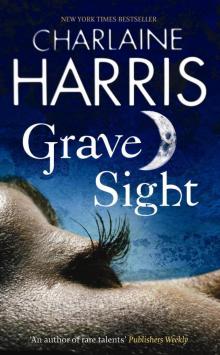 Grave Sight
Grave Sight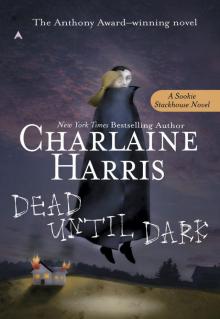 Dead Until Dark
Dead Until Dark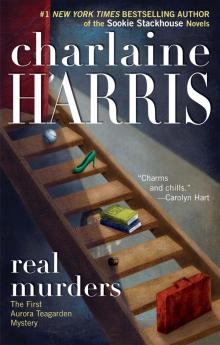 Real Murders
Real Murders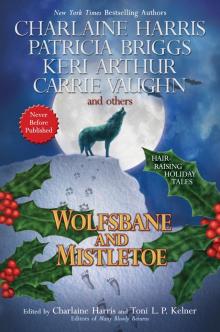 Wolfsbane and Mistletoe
Wolfsbane and Mistletoe All the Little Liars
All the Little Liars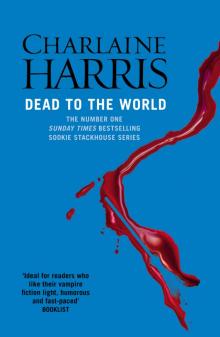 Dead to the World
Dead to the World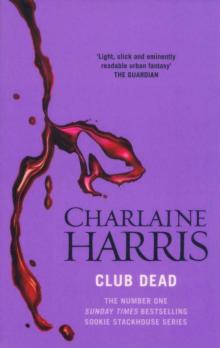 Club Dead
Club Dead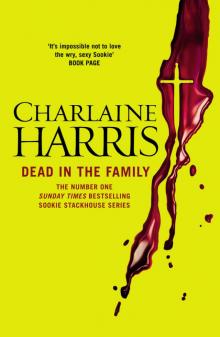 Dead in the Family
Dead in the Family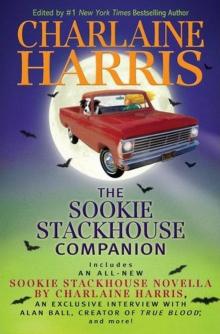 The Sookie Stackhouse Companion
The Sookie Stackhouse Companion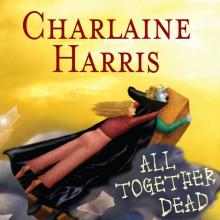 All Together Dead
All Together Dead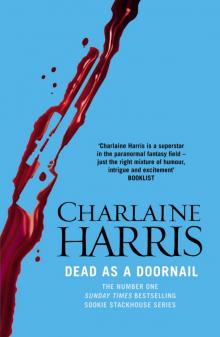 Dead as a Doornail
Dead as a Doornail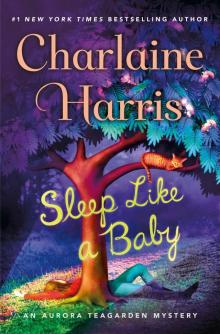 Sleep Like a Baby
Sleep Like a Baby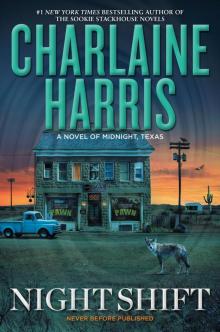 Night Shift
Night Shift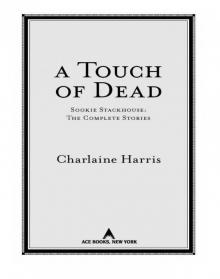 A Touch of Dead
A Touch of Dead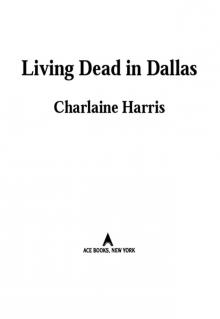 Living Dead in Dallas
Living Dead in Dallas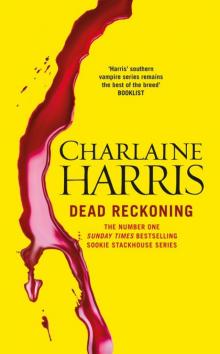 Dead Reckoning
Dead Reckoning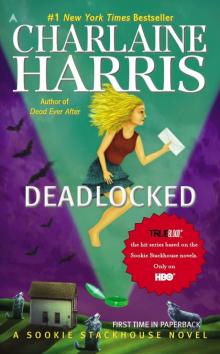 Deadlocked
Deadlocked Dead and Gone
Dead and Gone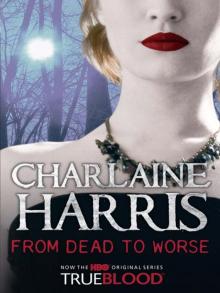 From Dead to Worse
From Dead to Worse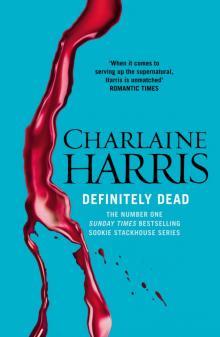 Definitely Dead
Definitely Dead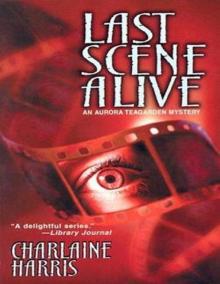 Last Scene Alive
Last Scene Alive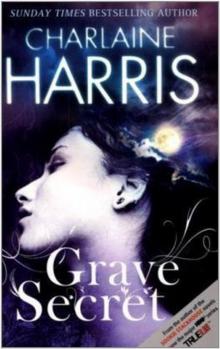 Grave Secret
Grave Secret Three Bedrooms, One Corpse
Three Bedrooms, One Corpse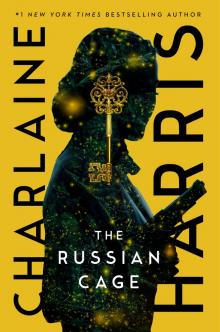 The Russian Cage
The Russian Cage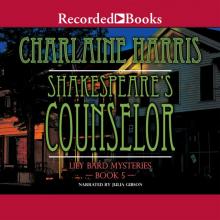 Shakespeares Counselor
Shakespeares Counselor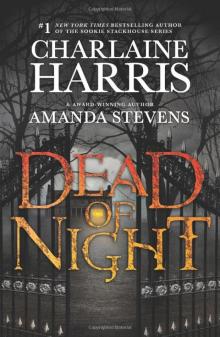 Dead of Night
Dead of Night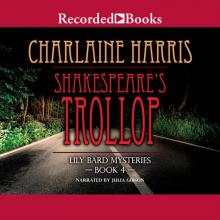 Shakespeares Trollop
Shakespeares Trollop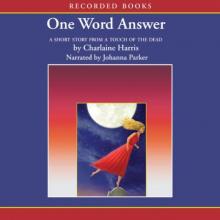 One Word Answer
One Word Answer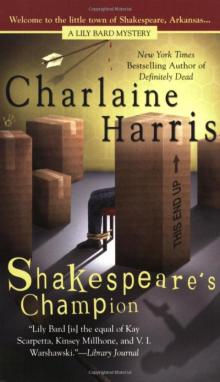 Shakespeares Champion
Shakespeares Champion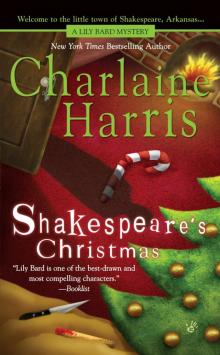 Shakespeares Christmas
Shakespeares Christmas Shakespeares Landlord
Shakespeares Landlord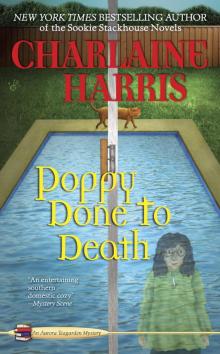 Poppy Done to Death
Poppy Done to Death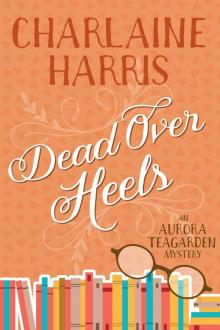 Dead Over Heels
Dead Over Heels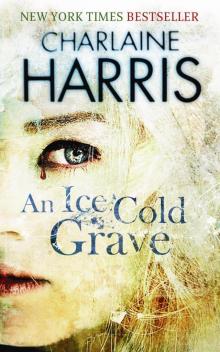 An Ice Cold Grave
An Ice Cold Grave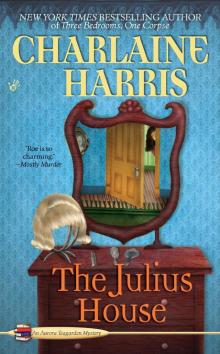 The Julius House
The Julius House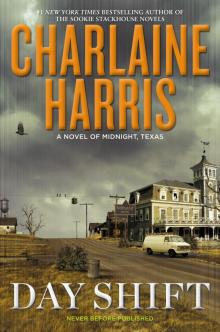 Day Shift
Day Shift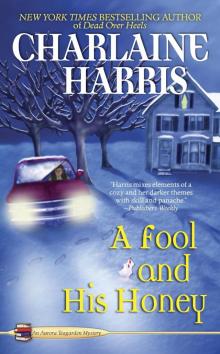 A Fool And His Honey
A Fool And His Honey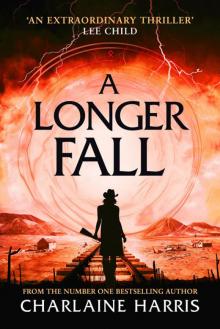 A Longer Fall (Gunnie Rose)
A Longer Fall (Gunnie Rose)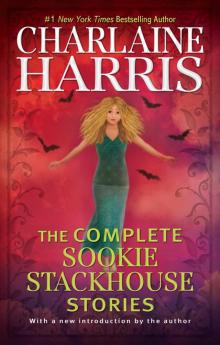 The Complete Sookie Stackhouse Stories (Sookie Stackhouse/True Blood)
The Complete Sookie Stackhouse Stories (Sookie Stackhouse/True Blood)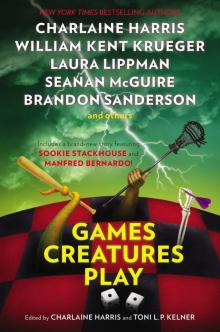 Games Creatures Play
Games Creatures Play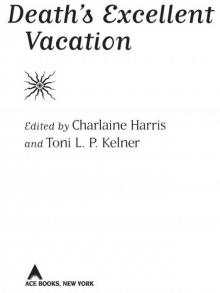 Death's Excellent Vacation
Death's Excellent Vacation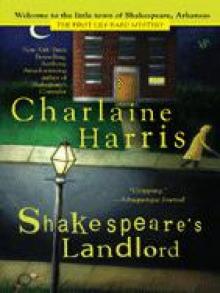 (LB2) Shakespeare's Landlord
(LB2) Shakespeare's Landlord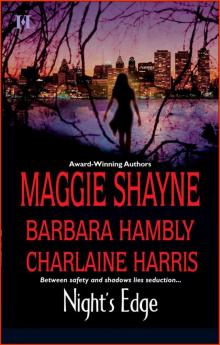 Dancers In The Dark - Night's Edge
Dancers In The Dark - Night's Edge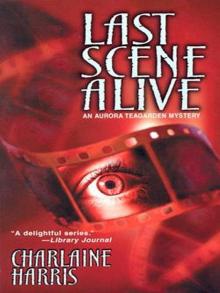 Last Scene Alive at-7
Last Scene Alive at-7 Deadlocked: A Sookie Stackhouse Novel
Deadlocked: A Sookie Stackhouse Novel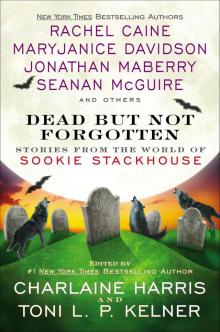 Dead But Not Forgotten
Dead But Not Forgotten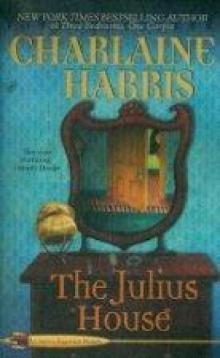 (4/10) The Julius House
(4/10) The Julius House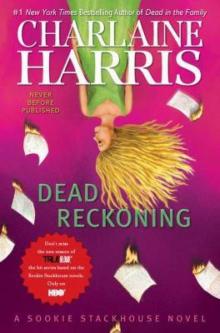 Dead Reckoning: A Sookie Stackhouse Novel
Dead Reckoning: A Sookie Stackhouse Novel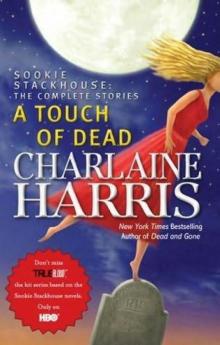 A Touch of Dead (sookie stackhouse (southern vampire))
A Touch of Dead (sookie stackhouse (southern vampire))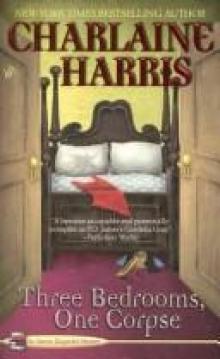 (3T)Three Bedrooms, One Corpse
(3T)Three Bedrooms, One Corpse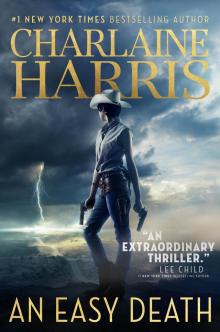 An Easy Death
An Easy Death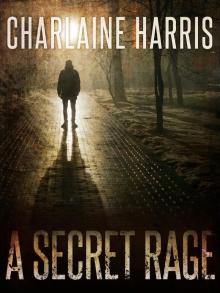 A Secret Rage
A Secret Rage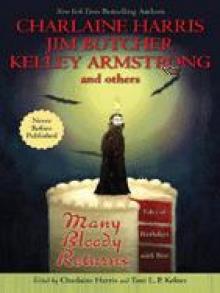 Many Bloody Returns
Many Bloody Returns![Harper Connelly [3] An Ice Cold Grave Read online](http://i1.bookreadfree.com/i/03/25/harper_connelly_3_an_ice_cold_grave_preview.jpg) Harper Connelly [3] An Ice Cold Grave
Harper Connelly [3] An Ice Cold Grave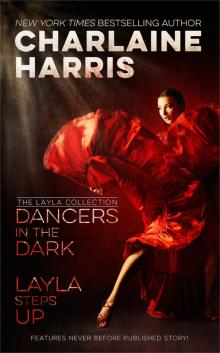 Dancers in the Dark and Layla Steps Up
Dancers in the Dark and Layla Steps Up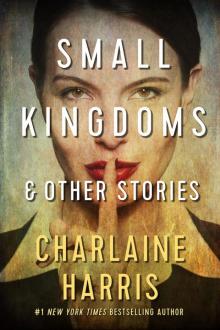 Small Kingdoms and Other Stories
Small Kingdoms and Other Stories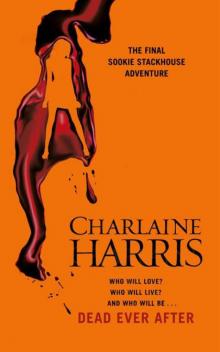 Dead Ever After: A Sookie Stackhouse Novel
Dead Ever After: A Sookie Stackhouse Novel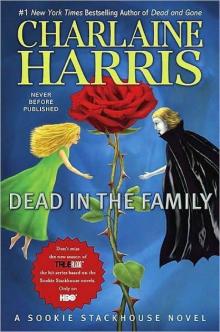 Dead in the Family ss-10
Dead in the Family ss-10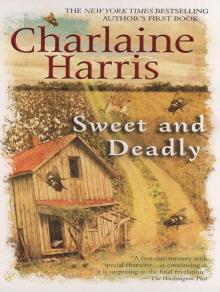 Sweet and Deadly aka Dead Dog
Sweet and Deadly aka Dead Dog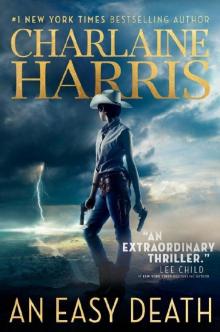 An Easy Death (Gunnie Rose #1)
An Easy Death (Gunnie Rose #1) The Complete Sookie Stackhouse Stories
The Complete Sookie Stackhouse Stories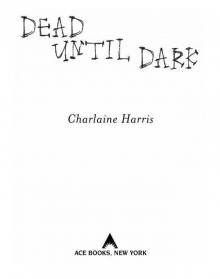 Sookie Stackhouse 8-copy Boxed Set
Sookie Stackhouse 8-copy Boxed Set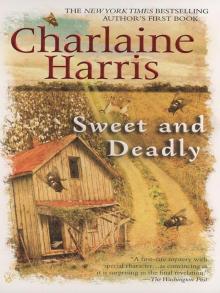 Sweet and Deadly
Sweet and Deadly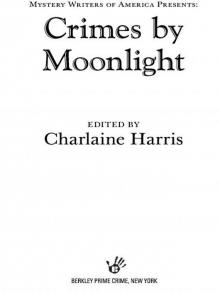 Crimes by Moonlight
Crimes by Moonlight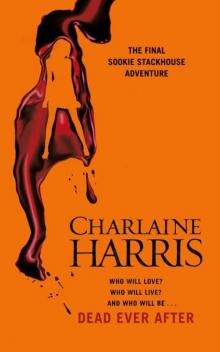 Dead Ever After: A True Blood Novel
Dead Ever After: A True Blood Novel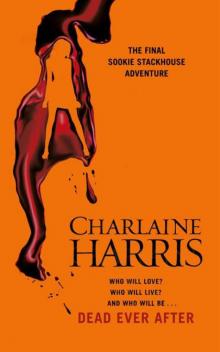 Dead Ever After ss-13
Dead Ever After ss-13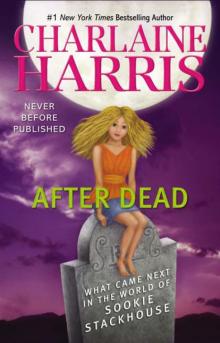 After Dead
After Dead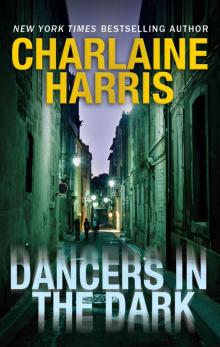 Dancers in the Dark
Dancers in the Dark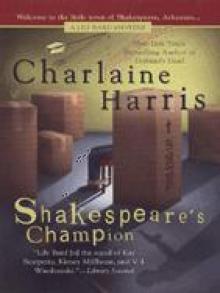 (LB1) Shakespeare's Champion
(LB1) Shakespeare's Champion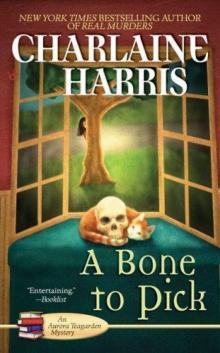 A Bone to Pick (Teagarden Mysteries,2)
A Bone to Pick (Teagarden Mysteries,2)